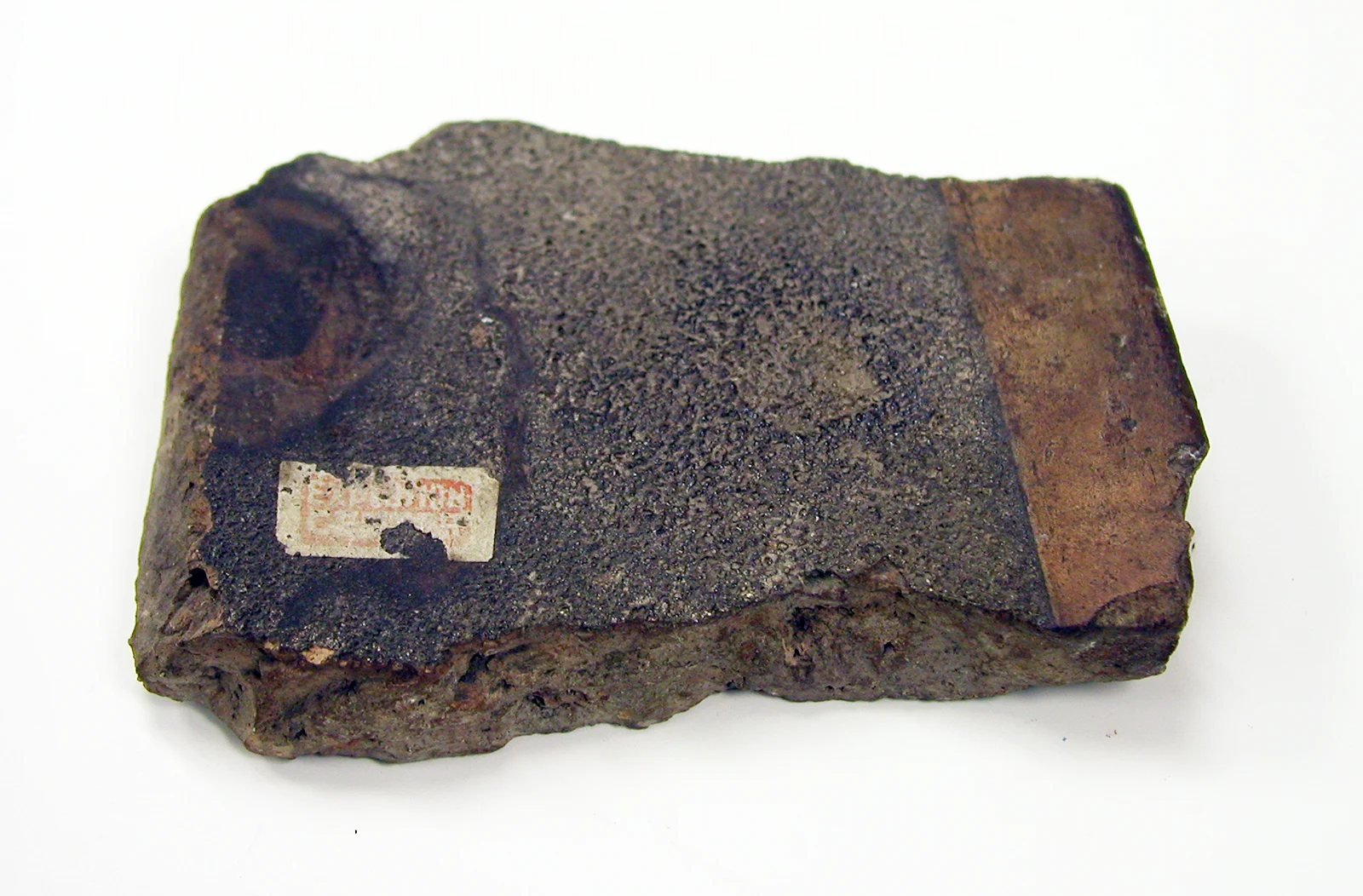Before we look at this particular item in the collection of ORAU’s Museum of Radiation and Radioactivity, let’s discuss some history. Back in 1945, the United States detonated two atomic bombs over the Japanese cities of Hiroshima and Nagasaki. The heat from the explosions over Hiroshima caused the severe blistering of buildings, which included the ceramic roof tiles. One of these roof tiles then made its way to the collection. Here are four interesting facts about the roof tile from Hiroshima located at ORAU’s Museum of Radiation and Radioactivity.

1. Most buildings in Hiroshima were constructed of wood
According to Paul Frame, Ph.D., retired ORAU health physicist and curator of ORAU’s Museum of Radiation and Radioactivity, a large percentage of the buildings in Hiroshima were primarily made of wood. As a result, they were pretty well cleaned out by the blast and the resulting fires. In many cases, all that remained were fragments of the ceramic roof tiles.
2. Item was donated by Robley Evans
One of the individuals who donated many items to Frame for the collection was Robley Evans. The story of how he came into possession of the roof tile from Hiroshima is interesting. After Hiroshima was bombed, Evans decided to make a visit to the area, where he was able to purchase this item from a street vendor. According to Evans, selling artifacts of the explosions provided one way for citizens of the devastated city to earn money. While there is no way to really verify the item’s authenticity, the characteristics of it are comparable with other items damaged by the explosion.
3. Process of thermoluminescence used to test for exposure to radiation
According to Frame, in the decades following WWII, researchers have employed a variety of methods to assess the radiation exposures to the victims of the atomic explosions. One such method involved thermoluminescent dosimetry wherein trapped radiation energy in a crystal is released in the form of light by the application of heat. This involved removing tiny quartz crystals from ceramic tiles that were obtained at different locations around Hiroshima. These crystals were then cleaned and heated. The intensity of the light emitted by the crystals during the heating process was then related to the radiation exposures near the location where the tiles were obtained.
4. Tile is believed to have come from the Sairensi Temple in Hiroshima
While it’s incredible to have a roof tile from Hiroshima in the collection at ORAU’s Museum of Radiation and Radioactivity, the thing that makes it even more amazing is having a location attached to it. According to the street vendor who sold the tile to Robley Evans, it came from the Sairenji Temple. According to Frame, the blistering of the tile (except for the area protected by an overlapping tile) indicates that the tile was located within a third of a mile from the explosion hypocenter. At greater distances, the temperatures caused by the explosion would not have been high enough to cause blistering.
Now that you know more about the roof tile from Hiroshima, be sure to explore some of the other items in ORAU’s Museum of Radiation and Radioactivity that have been curated from accidents and incidents.